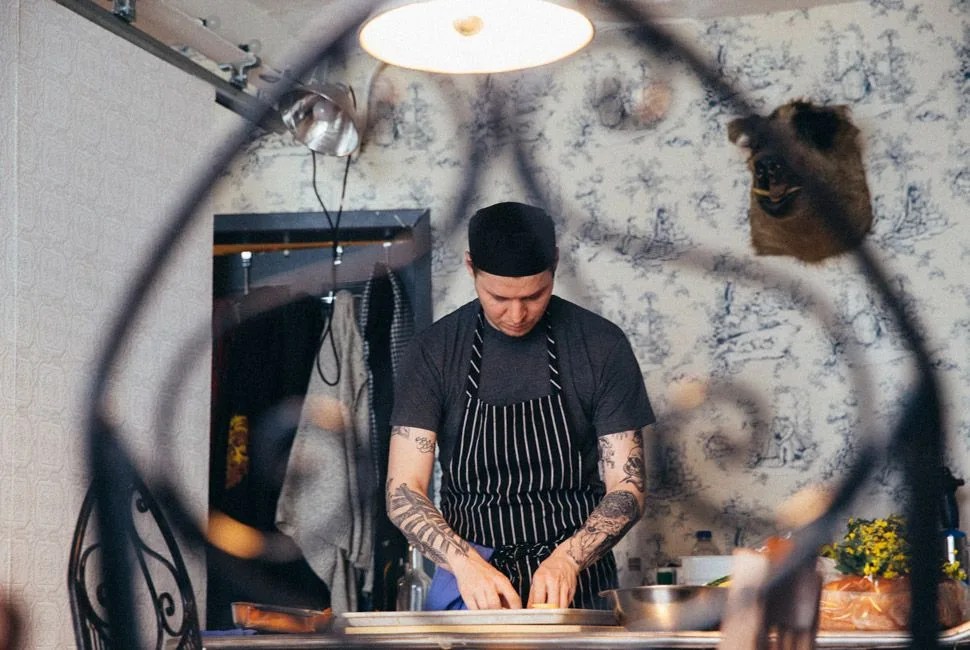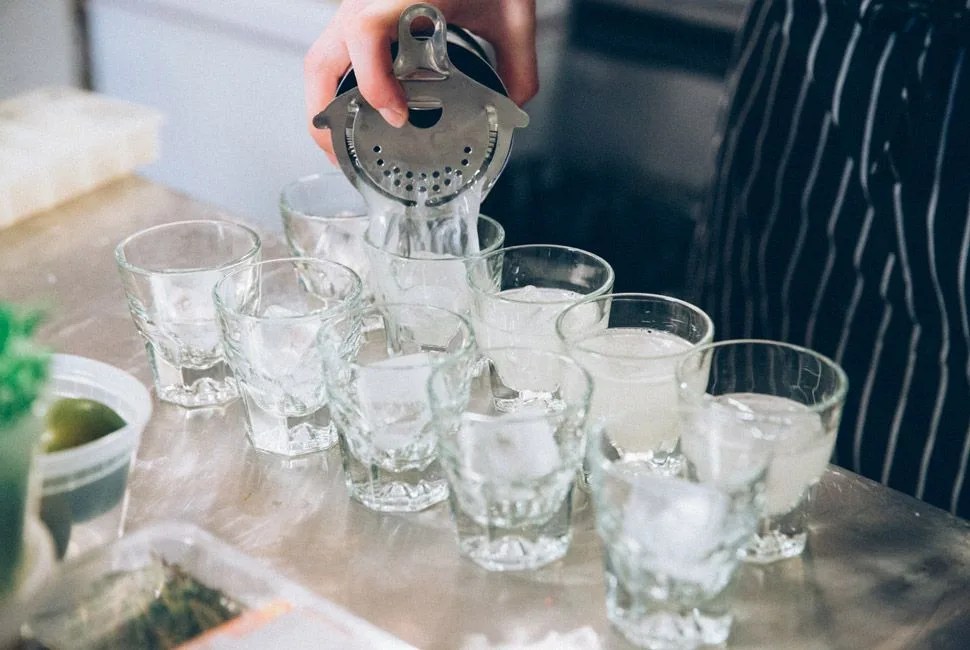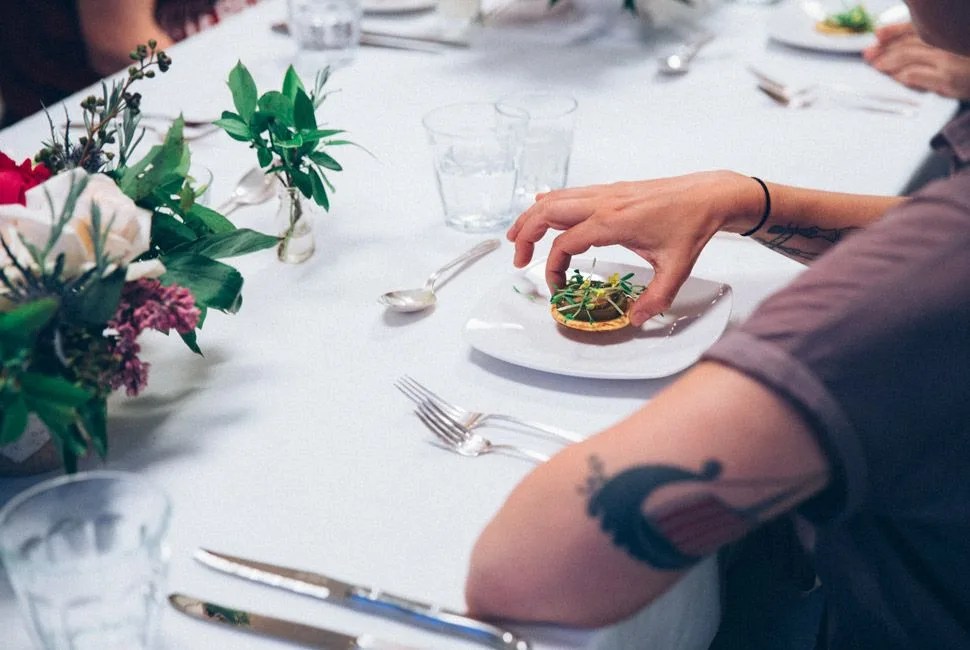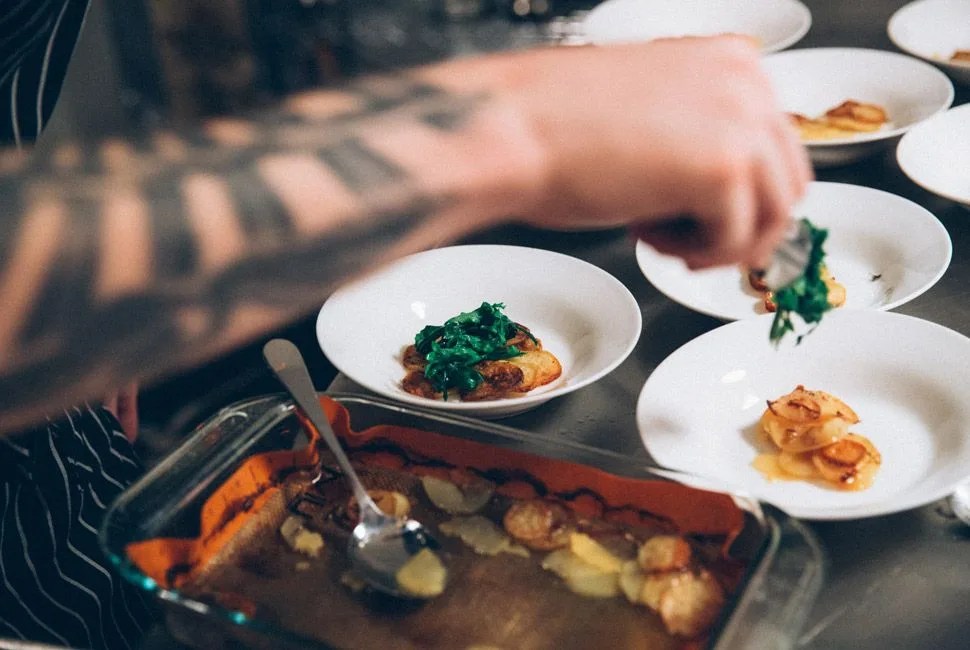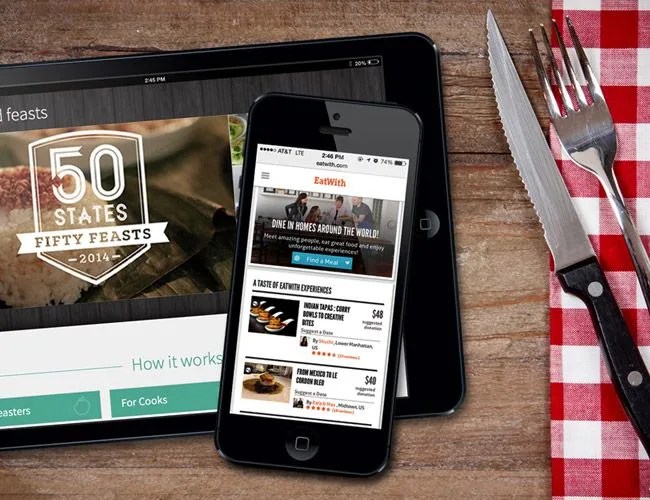18 photos
“It’s like SeaWorld. If you sit in the front row, you might get a little wet”, Peter Droste said, chuckling. He was using an eBay-purchased vacuum sealer to prep a duck for sous vide cooking as guests trickled into his Brooklyn apartment — a converted Williamsburg storefront — and were greeted by Lola, his dog. The apartment, bisected into a private bedroom and public (at least for the night) dining area by a temporary wall, belonged to Droste and his wife Morgan Beetham. In the dining room, a large, makeshift table was propped up on sawhorses, running the length of the room until it butted right up against Droste’s kitchen. In three hours, twelve strangers would sit down at the table for a seven-course dinner, each person vaguely connected through word of mouth. But right then, the place was a mess.
MORE GP DINING: 25 Best American Restaurants | The Texas BBQ Trail | Interview with a Restauranteur
The couple, their arms covered with tattoos, ran around the apartment pulling the evening together. Beetham laid down a tablecloth and dotted it twelve times with vintage silverware. Droste, in a black shirt, black toque and black chalk stripe apron, prepped dinner. The couple was casual about the night; they had been preparing dinner for strangers for just under a year as part of their underground supper club, Calva, named for Calvados rum, the main ingredient in a cocktail paired with the first course.
Calva began because Droste was disappointed with his “lack of input on the big picture dining experience” while he worked three years for what he called a “culinary free-jazz group”, Highlands Dinner Club. Tired of his complaining, a fellow chef dared him to put his money where his mouth was and create something better. Two weeks later, testing started; a month later Droste served his first Calva meal. Now, a year later, when he isn’t doing his other bill-paying “side hustles” like bartending, he’s cooking twice weekly for a group of adventure-seeking foodies who are actively ditching the traditional restaurant scene in favor of a home-cooked meal from Droste and conversation with eleven strangers.
“People want to do the next cool thing, experience something new. Restaurants are all the same, in a way. We’re doing something different with dinner tonight and supporting our neighborhood’s chef in the process.”
“People want to do the next cool thing, experience something new”, Annie Malarkey said. “Restaurants are all the same, in a way. We’re doing something different with dinner tonight and supporting our neighborhood’s chef [Droste] in the process.” Malarkey (who photographed the dinner for Gear Patrol) learned about Calva through a fellow photographer who works at the New York Times. The guests at Droste’s place had learned about the dinner largely through word of mouth; each of the diners was connected to someone else. Well, except for the guy from Feastly, one of the main platforms for finding underground supper clubs, and one of the places where Calva lists its dinners.


